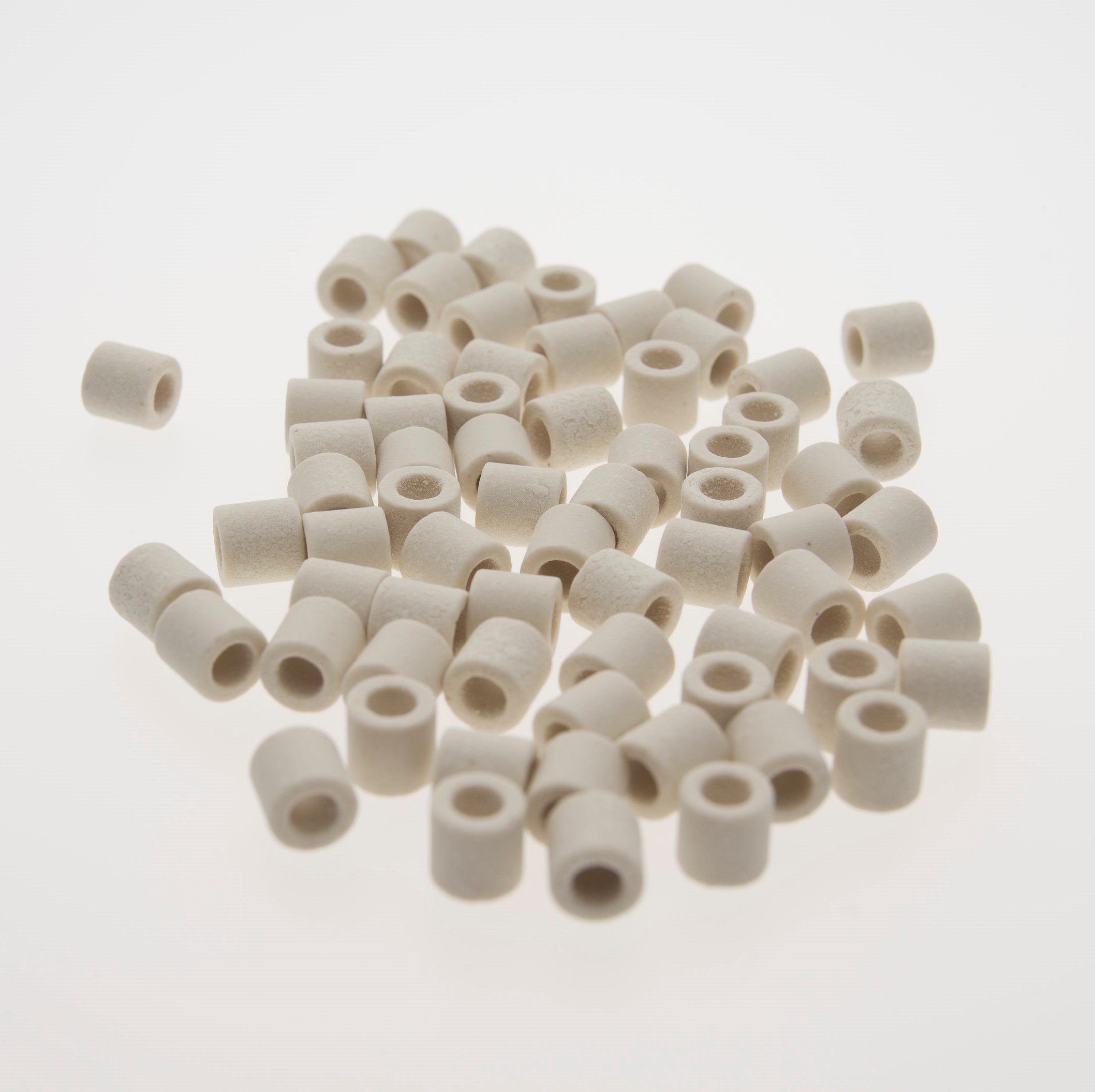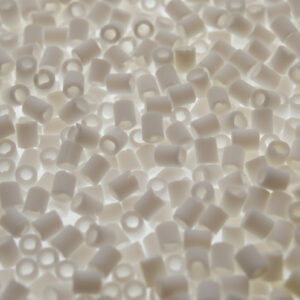Explore our ceramic portfolio:
Ceramic Substrates for Coated Catalysts
Selective gas-phase oxidation reactions, such as the production of acrylic acid, phthalic anhydride, or maleic anhydride often proceed at very high gas space velocities and temperatures and mainly take place at the outer surface of the catalyst body. In order to save active mass and to reduce unwanted side reactions, that may occur in deeper catalyst layers, it is a common strategy to apply a thin catalyst layer by coating techniques to an inert core.
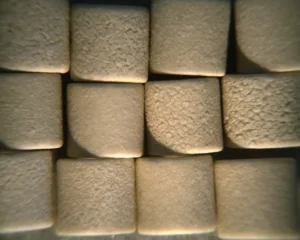
Exacer provides a portfolio of perfectly suited dense ceramic bodies, which are particularly designed for being used as an inert core for coated catalyst preparations:
● Optimized adhesion properties by tailoring the surface roughness
● Low attrition values for an optimized coating process
● Minimum quantity of leachable ions
● High quality processing with low numbers of defects
● Thin walls, rounded surface edges or slots for reducing pressure drop over the reactor tube and
maximizing the space time yield
● Various ceramic base materials and density variations for adjusting to the specific
reaction conditions.
These coating substrates are typically tailor-made shapes to match the individual requirements of each of our clients’ process set-ups.
Hot-Spot Reducers
Selective gas-phase oxidation reactions, such as the production of acrylic acid, acrolein, phthalic anhydride, formaldehyde, or maleic
anhydride are typically highly exothermic. This leads to the formation of hot-spots in the catalyst bed, where the total combustion
becomes the preferred reaction. It is a common strategy to dilute the active catalysts with inert particles in order to mitigate the peak
temperature at the hot-spot and to stretch it out over a larger reactor zone, which helps to significantly improve the overall
selectivity.
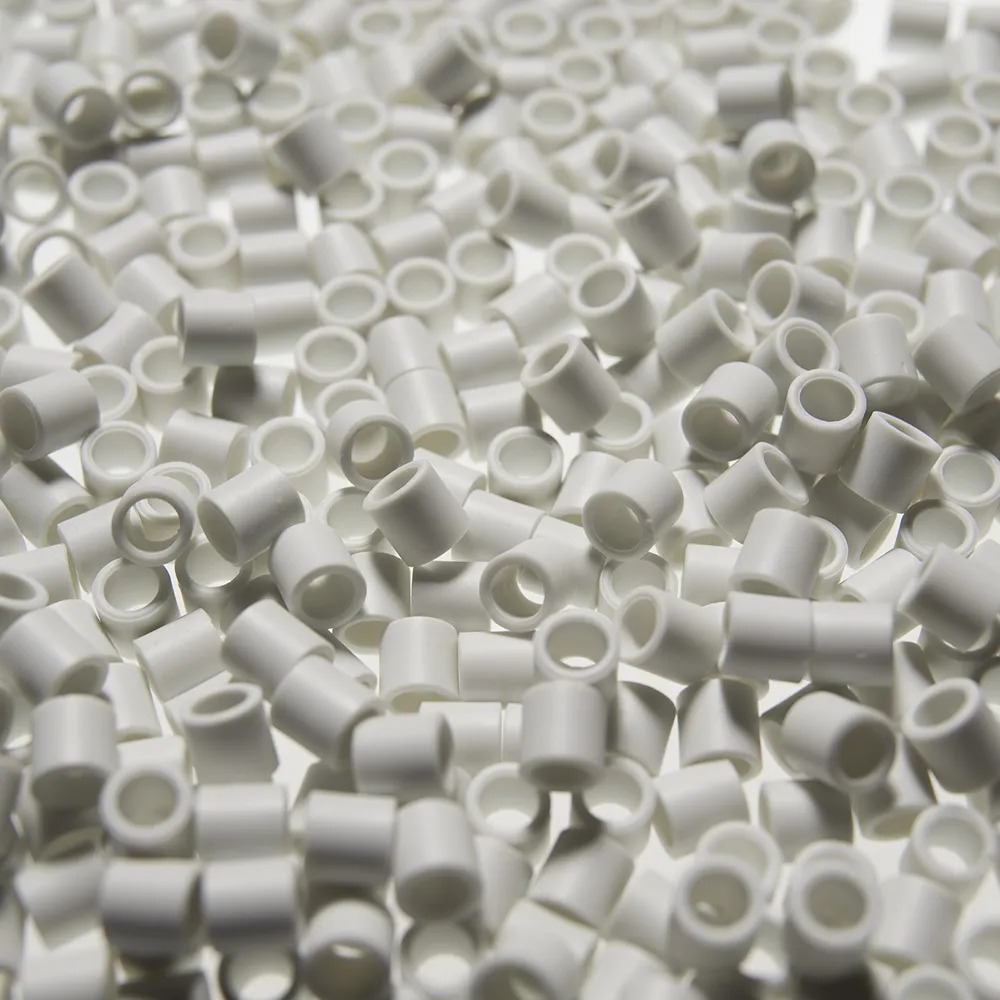
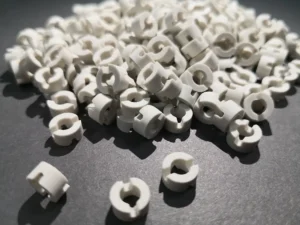
Exacer produces a large variety of dense ceramic bodies that perfectly match the stringent requirements for such diluting materials:
● A minimum quantity of leachable ions and a low reactive surface area
● Good heat transfer capacity
● High quality processing with a very narrow distribution of dimensions and unit weights, which is a prerequisite to
create a homogeneous and reproducible mixture, and with a very low number of defects
● Thin walls, rounded surface edges or slots for reducing pressure drop over the reactor tube and maximizing the space
time yield
● Various ceramic based materials and density variations for adjusting to any specific reaction condition requirement
Those hot-spot reducers are typically tailor-made shapes to match the individual requirements of each of our clients’ unique
process set-ups.

